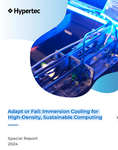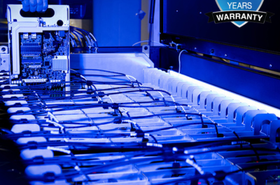During the past couple of years, the shift from niche machine learning (ML) applications to widespread adoption of Generative AI (GenAI) using large language models (LLMs), has significantly increased the demand for powerful GPUs. This rapid growth has strained manufacturers' ability to meet this demand, especially evident with shortages in supplies such as Nvidia GPUs (H100), sparking a competitive race among companies to secure these GPUs for expansion.
Over this past year, substantial investments in GenAI have pressured manufacturers to reconfigure their supply chains. Despite improvements in GPU availability, the primary focus has shifted to acquiring the infrastructure and power necessary to host and support these large AI clusters. Consequently, the current challenge lies in securing physical space and ensuring sufficient power capacity to rapidly deploy and operate these extensive AI infrastructures.
Power capacity: Innovative solutions for sustainable AI
Data centers use a substantial portion of the world's power resources. According to the International Energy Agency's (IEA) annual electricity report, data centers consumed 460 terawatt-hours (TWh) in 2022, accounting for two percent of global electricity usage – a figure expected to double by 2026. With the emergence of GenAI, energy demands are expected to double soon.
Fortunately, data centers are actively tackling the challenges of supporting these new structures in terms of power and cooling. They are increasingly exploring innovative and sustainable solutions such as direct-to-chip liquid cooling and immersion cooling methods. These advancements enhance efficiency and promote environmental sustainability in data center operations.
Pricing models: Balancing cost with performance
Entering the AI field today requires significant investment, especially for storage and GPU/hour consumption necessary for training or inference with LLMs. There are two main types of consumers in this space:
- Sporadic on-demand users: These individuals or companies develop small AI applications or fine-tune LLMs with small datasets. They typically work with large hyperscalers for their ease of use and quick on-demand availability.
- Heavy consumers: These entities might either develop and train large LLMs over extended periods using extensive datasets or operate large Platform-as-a-Service (PaaS) AI services. They often choose specialized Infrastructure-as-a-Service (IaaS) providers like Hypertec Cloud. The primary reasons for opting for such providers over hyperscalers are a more comprehensive portfolio, greater flexibility, and lower costs, which are critical when extensive and fast AI infrastructure is needed for prolonged durations.
Sustainable AI: Prioritizing environmental responsibility
GenAI is set to significantly increase power consumption in data centers globally. This growth presents challenges in efficiently supporting and cooling these large clusters. As AI continues to advance across sectors, prioritizing sustainable practices becomes crucial to ensure its benefits do not harm the planet.
To minimize environmental impact, several practices are effective. These include using energy-efficient hardware, constructing data centers with advanced cooling systems powered by renewable energy sources, and optimizing algorithms with model compression techniques during the development of LLMs.
Hypertec Cloud emphasizes energy-efficient infrastructure, integrating innovative cooling solutions in both hardware and data centers. Our focus is on reducing power and water consumption, while also repurposing excess heat generated by high-power loads to heat greenhouses and neighborhoods. Integrating these sustainability measures early on is essential for AI companies to mitigate the environmental impact of GenAI.
Conclusion
The rapid growth of AI presents both opportunities and challenges. Ensuring high availability, managing power demands, balancing cost with performance, and prioritizing sustainability are vital for leveraging AI's full potential responsibly. Adopting innovative and sustainable practices allows us to navigate these challenges and ensure that AI continues to drive progress without compromising our planet’s future.
More from Hypertec
-

Adapt or Fail: Immersion Cooling for High-Density, Sustainable Computing
Special Report 2024
-

Sponsored Immersion cooling: Balancing sustainability and performance for AI
Reimagining the data center for sustainable growth
-

Sponsored Hypertec raises the bar with immersion-born servers
Coupled with industry-leading warranty, immersion-born servers deliver energy efficiency gains and reduce operational costs for data center operators

